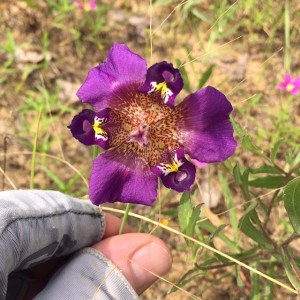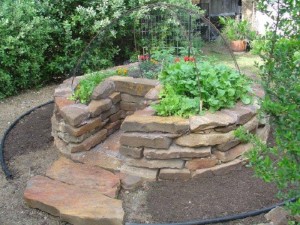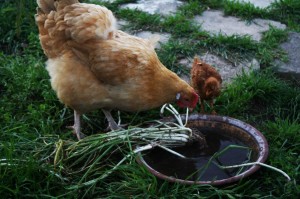When referencing produce and food the word “organic” has become a familiar term but is still not something many people understand fully. If a product is certified organic then the contents must be 95% or more organic, which means free of synthetic additives such as pesticides, chemical fertilizers and dyes, and must not be processed using industrial solvents. The same concept applies to organic landscaping and gardening as well.
According to local organic landscaper, Sam Sitterle of Green Grow Organics, “Just because a lawn is green, doesn’t mean it’s healthy. We call it fat grass. When it’s chemically-fed, it’s not necessarily healthy. Balancing the biology in the soils is key. Let the microbes do what they do and plants grow according to their needs. Force-feeding with salt-based fertilizers disrupts the biology and causes unhealthy conditions that create harmful fungal growths and leaves plants susceptible to pests.”
Most commercial landscapers use toxic chemicals, such as Roundup, which besides leaving your lawn malnourished, can also have harmful ramifications for your family. Sam is convinced that many of the autoimmune health problems we’re seeing these days are a direct result of these chemicals. “I’m convinced the problems are environmental and would resolve if people would just eat organic,” he said. Sam also points out that veterinarians are seeing more and more pets showing up with cancer on their paws and noses from running around on chemically-treated lawns.
As an alternative to these common landscaping practices, Sam uses a proprietary blend of actively aerated compost tea filled with healthful bacteria (similar to healthy gut flora) that nourishes the landscape. “The plants love it!” said Sam. “Our brews are so bacteria- and fungal-based that when you spray the leaves of the plant with it, they will occupy the spaces that would otherwise be attacked by a seasonal invader. We bring the good guys to the fight, overpowering fungal diseases like brown patch and powdery mildew.”
Interestingly, Sam can often tell what nutrients are deficient in your soil just by evaluating the weeds that are present. “For instance, grassy weeds are sequestering calcium. Virginia button weed sequesters cobalt. Clover signifies a nitrogen deficiency. When spotting weeds, pull them if you like but leave them to be mowed over. These weeds are there for a reason. Mother Nature makes no mistakes, ever,” explained Sam.
Tip to Kill Fire Ants Without Harmful Chemicals
Sam offers a little tip for those who wish to kill fire ants without using chemicals. Surprisingly, it’s Mountain Dew to the rescue for this one. Pour it over the ant hill and let it do its work. “The carbon dioxide displaces the oxygen, sickening the queen, and the caffeine is a neurotoxin,” said Sam. Try it, it works!
For a custom home that will perfectly showcase your organic landscape, call us at 210-494-5400 to set up a free consultation. If you wish to be added to our private email list for our newsletter, please sign up here.



